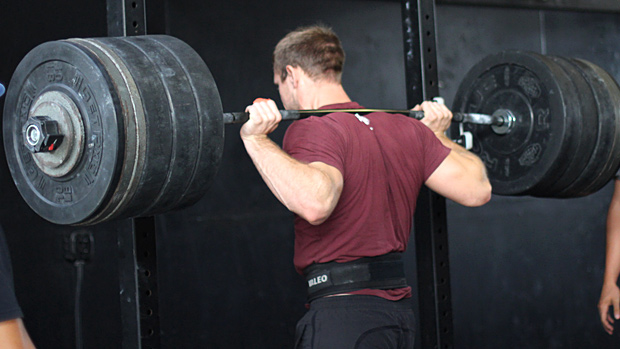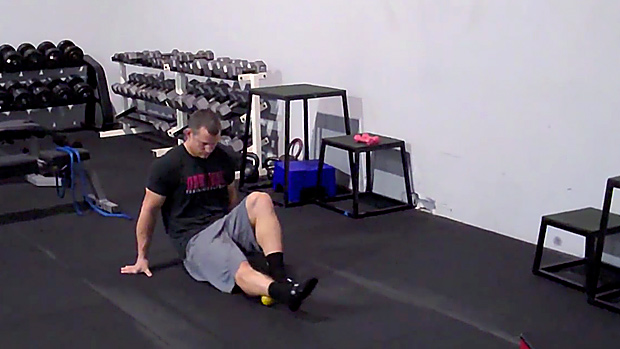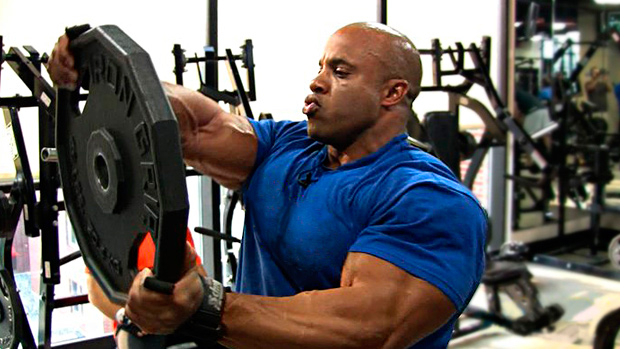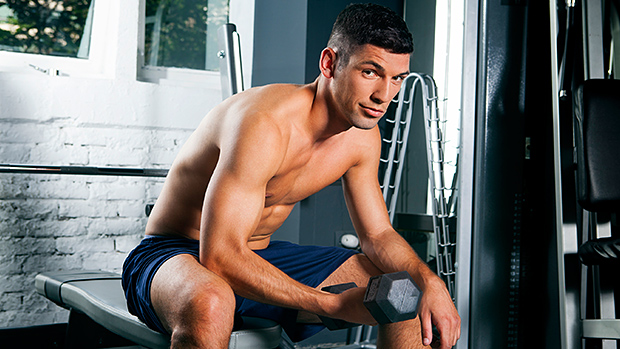We've all been there. No matter how big and educated we think we are now, at one time or another we were small, ignorant, and out in our garages trying desperately to push up 100 pounds of plastic-wrapped weights we had just brought home from Kmart. Through magazines and books, but mostly through trial and error, we learned how to build muscle and lose fat. We were burned by boron and suckered by Cybergenics, but pleasantly surprised by creatine and Tribex-500. In short, the more we learned, the stronger we became.
But wouldn't it have been nice if we would've had a mentor, some experienced lifter to teach us how to squat and eat right? He would have saved us from years of slow gains. Think about it?how much bigger, stronger, and leaner could you be now if you would have had some guidance in the very beginning?
Testosterone is geared toward a more advanced, bullshit-free type of crowd, but I feel that it's also our responsibility to help the people who are new to weight training. So we've set up this little "school" for those new to bodybuilding. If you have any "newbie" questions about training, diet, or supplementation, send them here, and we'll hook you up.
Big Lifts Equal Big Arms
I'm 17 years old and have been training for a year-and-a-half. I mainly train arms, but they never seem to grow. Can I follow a special workout or diet to add a few inches to my arms?
As strange as it sounds to a newbie, you have to train the whole body if you want one part to grow. In fact, there've been a few studies in which doing nothing but squats put some size on the upper arms! Most think that this has something to do with the body keeping itself in balance. Overall bodyweight also plays a role. Think about it: How many 140-pounders do you see with 19-inch arms?
So, if you want big arms, you need an all-around big body. How do you do this? First, start with compound exercises like squats, deadlifts, bench presses, pull-ups, dips, etc. These types of exercises are more important than direct arm work in the beginning. In fact, a routine based solely on the above exercises would add size to your arms even though there's little direct arm work involved. Diet plays a role, too, and most "hardgainers" simply don't eat enough of the right kinds of food, like proteins.
Constant Cravings
I'm really trying to cut up, but the cravings are killing me. What's the best way to deal with them? Any good appetite suppressants out there?
First off, there's a difference between hunger and craving. Unless you're morbidly obese, I don't think that you need to go hungry to lose weight. If you're hungry all of the time, then you're probably not eating enough, and you may end up losing muscle along with the fat. Muscle loss during dieting is the primary cause of the "yo-yo effect."
Cravings are different. A craving is when you really want to eat a certain food, even though you're not hungry. For me, it's pizza. If you gave me the choice between either a steaming mushroom pizza or former "Playmate of the Year" and new Cutty Sark model Karen McDougal, I'd head straight for...okay, okay. Honestly, I'd do a swan dive on the squeezably soft Miss McDougal! But just as soon as I finished, I'd head for the pizza. I don't think that I'd even share it with Karen, that's how much I like pizza! To deal with this craving, I do a few things:
• Eat pizza! Seriously, I strongly believe that you should eat one "free meal" of anything that you want, once a week. If you're doing everything else right, a good meal at a restaurant isn't going to kill you, and it may help you stay sane during a diet.
• Eat a handful of macadamia nuts. The fats will help send your brain a "full" message?just don't do it nonstop, 24 hours a day!
• Control insulin in order to control cravings. Read the T-Dawg Diet article from Issue 83 of Testosterone, and you'll be on your way to a six-pack.
As for appetite suppressants, most Kmart brands that you see on TV simply contain ingredients that act as Novocain to the stomach. In other words, they numb the stomach's lining. A product like MD6 works better since it actually works on the parts of the brain that control appetite (in addition to aiding fat loss in a variety of other ways).
To sum up, eat if you're hungry, and deal with it if you're just having a craving.
Best Protein
What's the best type of protein to use if my goal is to build muscle?
I remember my first experience with different kinds of proteins. Back when I was a teenager, I bought my first muscle magazine. I took it home and began to absorb all of the useful information, like those wonderful Weider Principles. Yeah, right! Actually, I took it home and masturbated furiously to the pictures of Rachel McLish and Cory Everson. (Admit it, experienced guys, you probably did, too. Only TC used to paddle the poodle while looking at Betty Weider.)
After a few weeks of vigorous whacking, I decided to actually read the thing. I still remember one particular ad for Weider supplements. It showed three top bodybuilders of the time holding up their "favorite" type of protein powder. There was beef protein, soy protein, and vegetable protein. They were all in these 50-pound sacks that looked like dry dog food, only dry dog food tasted better than protein shakes back then. I remember thinking:
"If I want a build like this guy, I use soy protein. And if I want to look like this dude, I use beef protein."
Ahhh, the days of naiveté, ignorance, and stiffies in algebra class! The point is that we probably pay way too much attention to the subtle differences in certain proteins, especially when it comes to "super ion-exchanged" versus "nuclear-filtered hydrolyzed" stuff. Yes, whey protein looks better on paper. But, for the most part (especially for a beginner), just make sure that you get enough of any type of protein, and you'll do fine. For more information, check out TC's "Seven Shortcoming of MRPs" article in the first printed issue of Testosterone.
Football Workout
I just joined a gym and will be training to improve my football performance. I've been working out three times per week for about an hour per workout. I do my best to train hard. When I started my workouts, I could curl 30 pounds for about 25 reps. Now I can curl 40 pounds for about 20 reps. What's the fastest way to build upper body mass for football, and how do I enlarge my arms?
First, performance in football is about whole body conditioning, but I'd have to say that the lower body is more important than the upper body. Regardless of what position you play, you need to be able to explode off the line and power your way through a bunch of other guys who want to hang your testicles from their rearview mirrors. Use power cleans to gain explosiveness, and squats and deadlifts to build some mass. Train the abs, too, in order to condition your body's all-important "core."
Try to avoid machine exercises. Always choose a free-weight exercise over a machine. One of the most feared high school football players that I've ever worked with used to go outside and push his car up and down the driveway about two or three times a week during the summer. Sounds odd, but the guy was a juggernaut on the football field once the season rolled around.
Also, what's up with the super-high reps, bro? I think that a combination of rep ranges is the best method, but sets of 25 reps aren't going to add much size or strength. Try using sets where you fail at 4-12 reps. You might want to work in the low-rep (1-4) range for a few weeks, then use higher reps (8-12) after that. Good luck!
Get a Grip
Thanks for publishing the question about abbreviations in the last Dawg School column. I have a feeling that Poliquin would rip our heads off for asking such basic questions. Here's another one that I was afraid to ask the big guy?could you explain all of those terms describing different types of grips?
No problem. I'll even include some mnemonic devices to help you remember them:
Supinated grip) With your arms hanging by your sides, the palms face frontward. Or, if doing lat movements, your palms face your body and the knuckles face away (as in a chin-up).
The word supinated sort of sounds like "super." You'll be able to do more chins with this type of grip, and you'll feel like Superman. Get it?
Pronated grip) With your arms hanging by your sides, the knuckles face away. Or, if doing lat movements, the palms face away from you, and the knuckles face your body (as in a pull-up).
Pronated contains the prefix "pro." It's harder to perform wide-grip pull-ups using this hand position. If you can do 20 of them with a 45-pound plate strapped to your ass, then you're a pro.
Semi-supinated grip) The palms face each other.
Poliquin often recommends doing a semi-supinated dumbbell bench press. If you follow his advice, you'll be as big as a semi.
Mixed grip) One hand is supinated, and one hand is pronated. You see this in the powerlifting style of deadlift.
Man, if you need a memory trick to figure this one out, then you be too dumb to lift weights! Consider a career in politics.
Only Two Days to Lift
Please don't flame me for saying this, but I can only train two days a week. Really! No, I don't watch too much TV, either. I go to school and have a full-time job. So, what would you do if you only had a couple of days to work out?
It depends on how those two days fall during the week. Are we talking about Saturday and Sunday, or are they separated like, say, Monday and Thursday? I'll give you suggestions for both, since we get this question a lot here at T-mag.
Weekend-only training
On Saturday, you'll train the lower body and abs. We won't fart with machines, either. Try this:
• Squats
• Stiff-legged deadlifts
• Lunges
• Swiss ball crunches and leg raises (or use a slant board with added weight) for abs
• Two sets seated, two sets standing for calves
• Cardio, if that's your kind of thing
On Sunday, you'll hit the upper body:
• Pull-ups and chins
• Bench presses
• Standing overhead presses
• Incline dumbbell curls
• Decline triceps extensions (skull crushers)
• Cardio
Since you're on a very limited schedule, we used all big basic compound movements. Notice that I put back exercises before chest on Sunday. That's important. Too many beginners don't train the back enough, and when they do, they're so tired from all of the chest stuff that the training effect is minimal. (Shit, there's a Weider Principle in there somewhere!)
Monday and Thursday training
(or something along those lines)
We don't want you to spend three hours in the gym, so here's a very abbreviated program that'll still get results. In fact, it'll kick your butt, and you'll wish that you had all week to split your training! Do this routine on both days, but just make sure that you have a couple of days to rest in between:
• Squats
• Deadlifts
• Hamstring curls
• Pull-ups
• Dips
• Bench presses
• Abss
Where's the arms, shoulders, and calves? Biceps get hit with pull-ups, triceps are worked with dips and bench presses, the shoulders also help in bench presses, traps are trained with deadlifts, and calves get some action with the other leg work. If you really want to train them, go ahead, but do them last in the routine. Hope all that helps!
Puny Legs
Even though I squat, I still think that my legs are puny. Yes, squatting is the king of the leg exercises. But what else can I do for upper leg mass?
How do you train your hamstrings? Some beginners fall into the habit of only training the muscles that they can see in the mirror. Consequently, they leave out hamstrings. Your hams, of course, make up a substantial part of the bulk of the thigh.
Here are some tips on training the hams. First, because of their predominantly fast-twitch muscle fiber make-up, hamstrings respond better to multiple, heavy sets. In other words, ditch the "three sets of ten" approach. Instead, try six sets of four reps in which you fail on the fourth rep. According to Poliquin, any set over eight reps is pointless.
Second, don't camp out on the leg curl machine. It's okay, but you need to train both functions of the muscle. Therefore, you also need to perform a straight-leg movement, like stiff-legged deadlifts or good mornings. Third, really focus on the eccentric or negative part of the movements. In other words, always lower the weights slowly. And finally, always start your leg training with ham work if your hams are deficient.
Macros and Micros
On the Testosterone site, you guys always refer to "macros" and micronutrients. Hook a newbie up, and explain exactly what those are, will ya'?
"Macros" are macronutrients: protein, fats, and carbohydrates. Micronutrients are vitamins and minerals. You need to pay attention to both if you want to build muscle or lose fat. While even beginners know about the importance of macronutrients, most pay little attention to micronutrients. At the very least, you should take a multivitamin or mineral supplement daily.
The old RDA guidelines are practically useless to weight trainers and athletes. For example, the RDA for vitamin C is around 60 mg per day. That's just enough to keep you from getting scurvy. I won't get into all of the benefits of taking extra vitamin C here, but they're numerous. Try to supplement at least a full gram of C a day on top of whatever you get from foods. Most of us around here take even more.
And, by the way, the recent study reporting that overdoses of C are associated with arterial plaque? There are some serious problems with their methodologies and conclusions, but that's a topic for another story.
We recently learned that certain minerals, namely zinc and magnesium, also play an important role in weight training and supporting testosterone levels. This is why you're seeing an explosion of ZMA supplements on the shelves these days. You may want to check out the Biotest ZMA blend at our Online Store. Note that while we usually don't recommend for teenagers to take testosterone boosters like Androsol or Tribex-500, ZMA is safe and effective for high school and college athletes to maximize their "manly" hormones.




